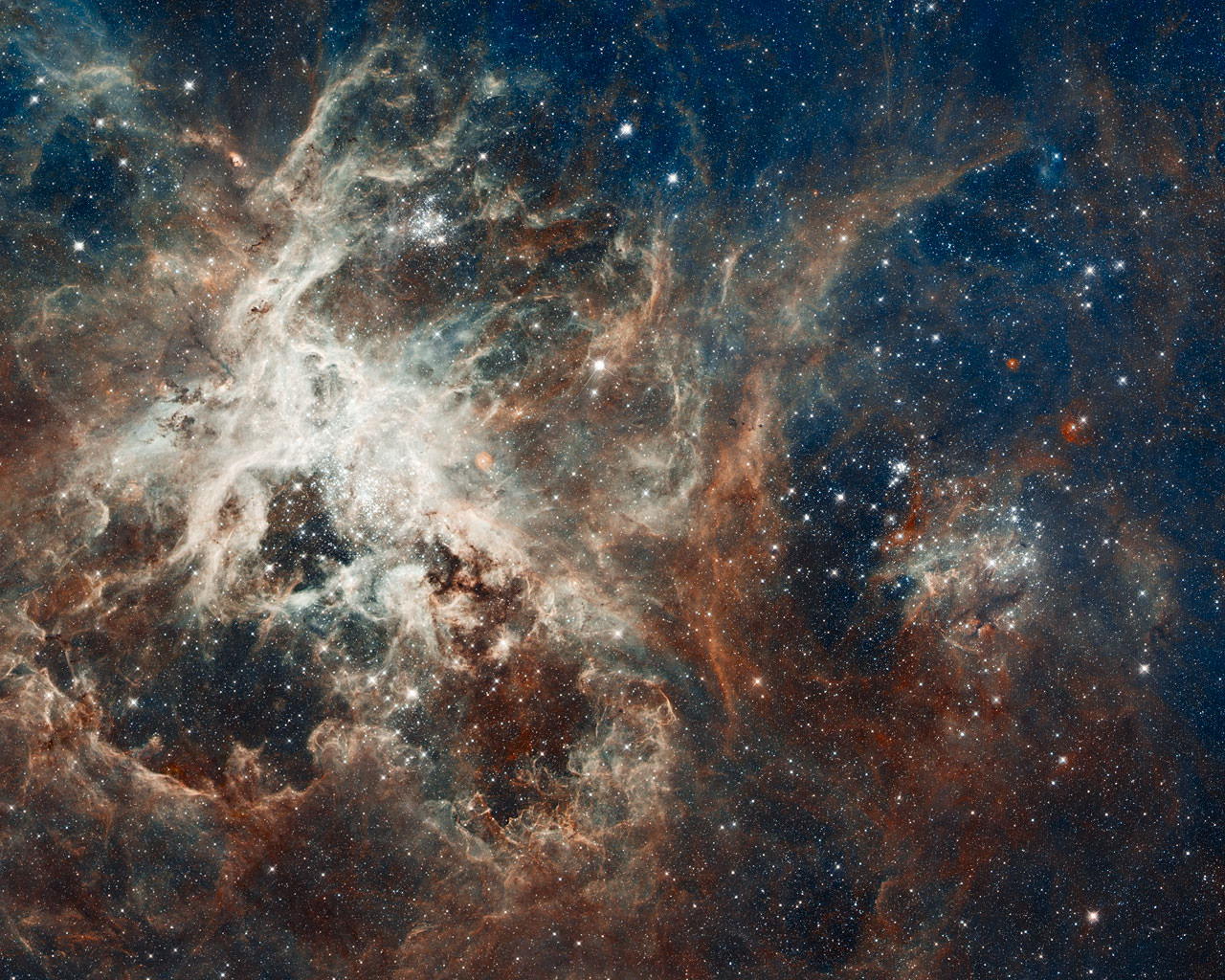[/caption]
Happy birthday to the Hubble Space Telescope! On April 24, 1990, HST was launched into low Earth orbit. Now, nearly 22 years later, Hubble is still producing incredible, stunning images of the farthest reaches of the Universe. For this year’s anniversary, the Hubble team took a special panoramic view of 30 Doradus, a raucous stellar breeding ground, located in the heart of the Tarantula nebula. The image comprises one of the largest mosaics ever assembled from Hubble photos and consists of observations taken by Hubble’s Wide Field Camera 3 and Advanced Camera for Surveys, combined with observations from the European Southern Observatory’s MPG/ESO 2.2-metre telescope that trace the location of glowing hydrogen and oxygen.
The Tarantula nebula is 170,000 light-years away in the Large Magellanic Cloud, a small, satellite galaxy of our Milky Way. No known star-forming region in our galaxy is as large or as prolific as 30 Doradus.
The stars in this image add up to a total mass millions of times bigger than that of our Sun. The image is roughly 650 light-years across and contains some rambunctious stars, from one of the fastest rotating stars to the speediest and most massive runaway star.
The nebula is close enough to Earth that Hubble can resolve individual stars, giving astronomers important information about the stars’ birth and evolution. Many small galaxies have more spectacular starbursts, but the Large Magellanic Cloud’s 30 Doradus is one of the only star-forming regions that astronomers can study in detail. The star-birthing frenzy in 30 Doradus may be partly fueled by its close proximity to its companion galaxy, the Small Magellanic Cloud.
The image reveals the stages of star birth, from embryonic stars a few thousand years old still wrapped in dark cocoons of dust and gas to behemoths that die young in supernova explosions. 30 Doradus is a star-forming factory, churning out stars at a furious pace over millions of years. The Hubble image shows star clusters of various ages, from about 2 million to about 25 million years old.
The image was made from 30 separate fields, 15 from each camera. Hubble made the observations in October 2011. Both cameras were making observations at the same time.
Take an interactive tour of the Tarantula Nebula at the HubbleSite
Source: ESA’s Hubble website


An annotated version of the image identifies star clusters, bright and dark nebulae, a supernova remnant and background galaxies in the image as well as the “runaway” star 30 Dor #16 and the rapidly-rotating star VFTS #102: http://www.spacetelescope.org/static/archives/images/screen/heic1206c.jpg